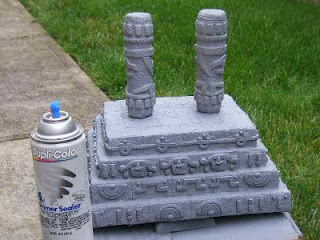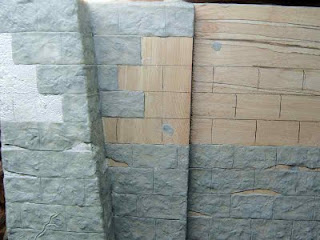

 When filmmaker Eric Kessler came to my studio to pick up the miniature Skull Island wall and altar I had worked on he brought along a special guest -- King Kong!
When filmmaker Eric Kessler came to my studio to pick up the miniature Skull Island wall and altar I had worked on he brought along a special guest -- King Kong! I had often admired Kessler's stop motion puppet from afar. Watching as Kess put Kong through his paces dispatching his stop motion adversaries on YouTube: YouTube - Kong vs. Spinosaurus
As good as the YouTube footage is it doesn't come close to doing this unique piece of articulated artwork justice!
Getting to examine Kong close up in my own hands was a great treat. Kess and I concluded the visit by having some fun posing Kong attacking the Skull Island gates for a few pictures.


















































